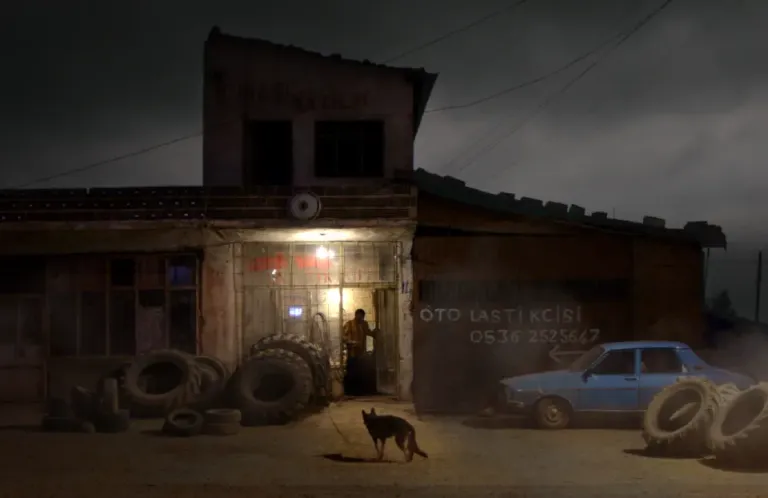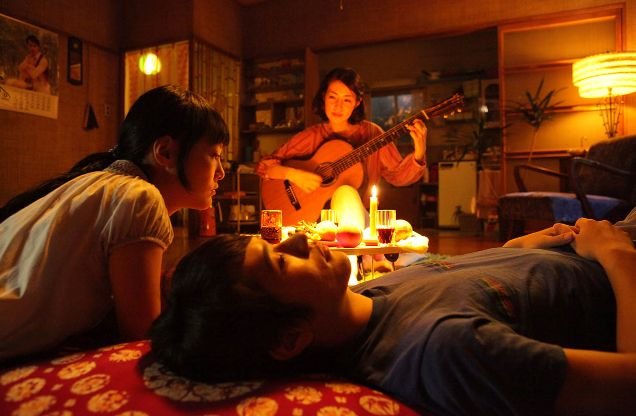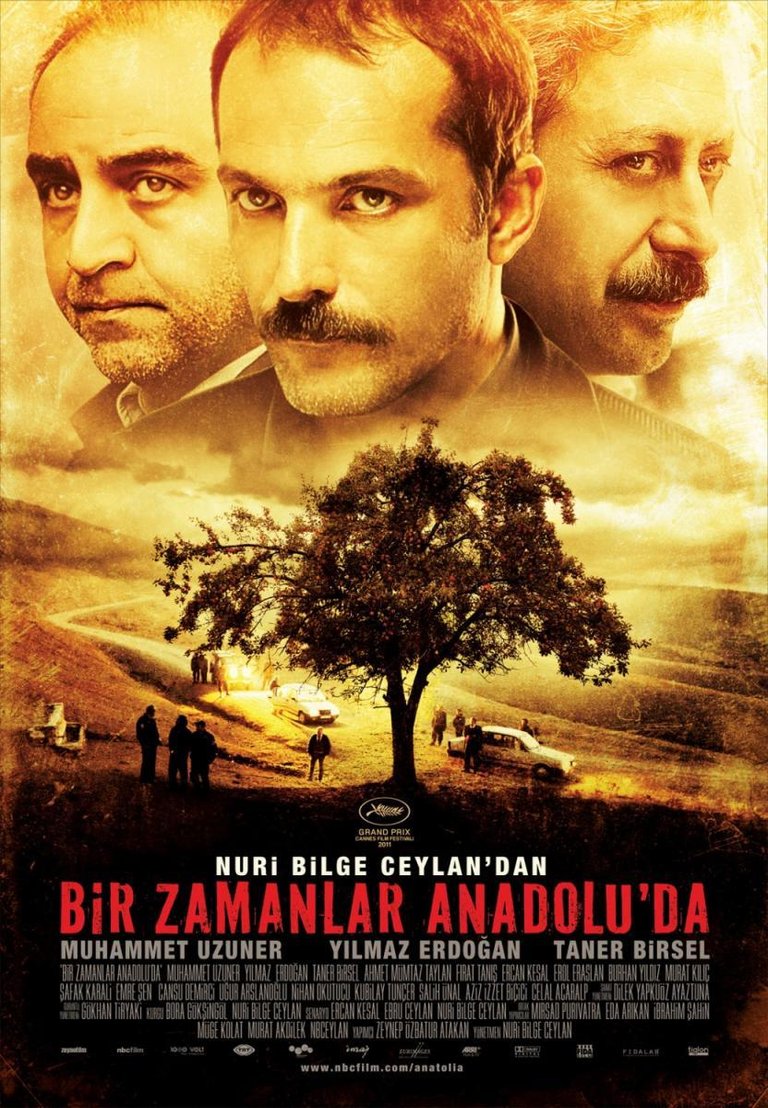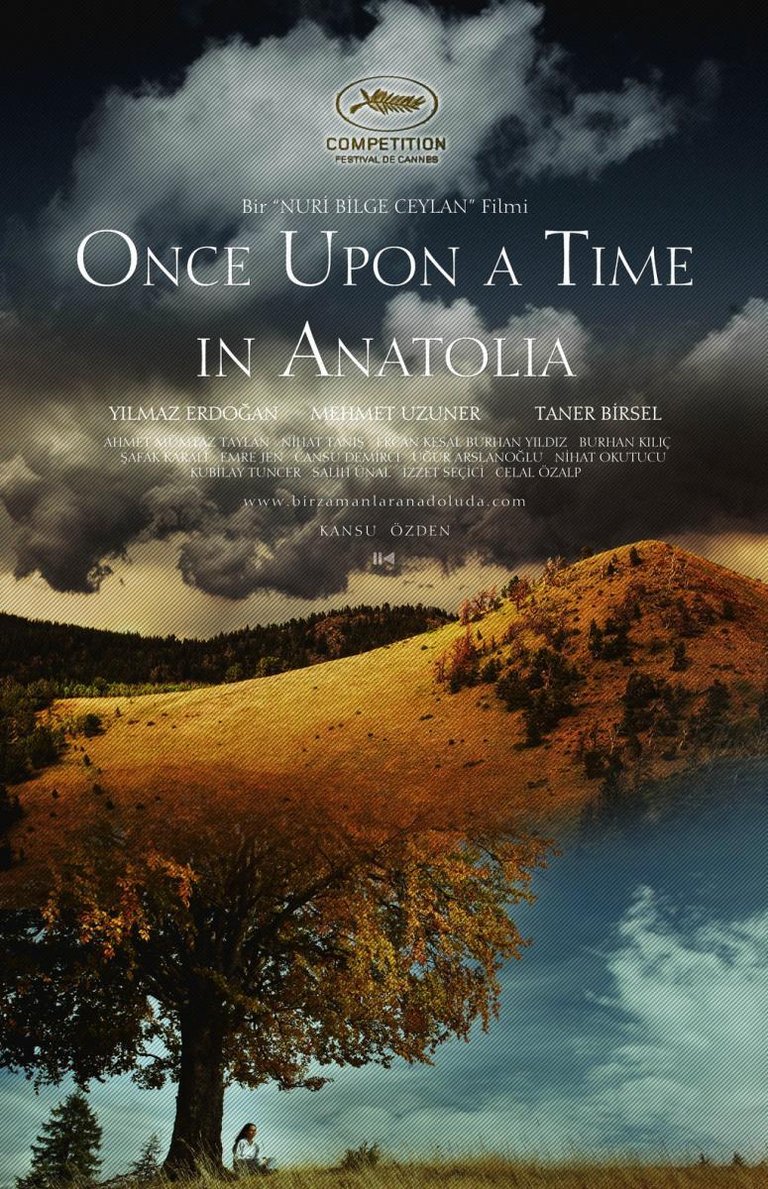Once Upon a Time in Anatolia (2011): a buried truth | una verdad enterrada

Obtuvo el Gran Premio del Jurado en el Festival de Cannes
I had this movie on my list for years. I don't remember how I came across it, I probably saw it on some list of European films, or Cannes winners, or something like that, because the truth is that I didn't know the director or any of the actors involved. A couple of times I was close to seeing it, but I decided on other options and I almost regretted having done so because I was putting off a very good movie.
Hacía años que tenía esta película en mi lista. No recuerdo cómo llegué a ella, probablemente la vi en algún listado de películas europeas, o ganadoras de Cannes, o algo así, porque la verdad es que no conocía al director ni a ninguno de los actores que participan. Un par de veces estuve a punto de verla, pero me dacanté por otras opciones y casi me arrepiento de haberlo hecho porque estuve demorando una muy buena película.
Turkey-Bosnia and Herzegovina co-production, directed and co-written by Nuri Bilge Ceylan, Bir zamanlar Anadolu'da (Once Upon a Time in Anatolia) is a very well thought out and executed psychological drama and police thriller. The film begins with a kind of prologue that makes sense much later: three men share some beers in a restaurant. We then follow some men who, in the middle of the night, cross the Turkish steppes on what seems like a search mission. Little by little, during the first minutes, we capture details and references. There are three cars that go down the road, and they are official cars: two from the police and one from the prosecutor. The presence of the latter, added to those of two individuals who are called suspects, reveals the object of the search: a corpse. In order to close the case and probably to reduce his sentence, the murderer offered to tell the authorities the exact place where he buried his victim and that is why we see them walking, at night, a road on the outskirts of the city. Said like this it seems like a spoiler, but the truth is that this information is deduced from the first minutes of the film, so I am not giving anything substantial away. Now, it's also true that if we talk about plot, there is almost nothing else. That is, we can say that the entire story of the film is that: the search for a corpse (and its consequences).
Coproducción Turquía-Bosnia y Herzegovina, dirigida y co escrita por Nuri Bilge Ceylan, Bir zamanlar Anadolu'da (Once Upon a Time in Anatolia) es un drama psicológico y un thriller policíaco muy bien pensado y ejecutado. La película inicia con una especie de prólogo que cobra sentido mucho más adelante: tres hombres comparten unas cervezas en un local. Luego seguimos a unos hombres que, en medio de la noche, atraviesan las estepas turcas en lo que parece una misión de búsqueda. Poco a poco, durante los primeros minutos, vamos captando detalles y referencias. Son tres los autos que van por la vía, y son autos oficiales: dos de la policía y uno del procurador. La presencia de este último, sumada a las de dos individuos que son llamados sospechosos, nos revela el objeto de la búsqueda: un cadáver. Para poder cerrar el caso y probablemente para reducir su sentencia, el asesino se ofreció a indicar a las autoridades el lugar exacto en el que enterró a su víctima y por eso los vemos recorrer, de noche, un camino en las afueras de la ciudad. Dicho así pareciera un spoiler, pero la verdad es que esta información se deduce de los primeros minutos de la cinta, así que no estoy adelantando nada sustancial. Ahora bien, también es cierto que si hablamos de trama, casi no hay nada más. Es decir, podemos decir que toda la historia de la película es esa: la búsqueda de un cadáver (y sus consecuencias).

And therein lies the intelligence and talent of the scriptwriters and the director: starting from a simple, easy-to-remember premise and creating an entire film around it. Once Upon a Time in Anatolia does not have the frenetic pace of conventional thrillers, the murder is not shown (it has already happened), there are no chases or shootouts, so although it has a police plot, in reality it's a drama that is supported by a good script.
Y he allí la inteligencia y el talento de los guionistas y del director: partir de una premisa simple, fácil de recordar, y crear toda una película alrededor de ella. Once Upon a Time in Anatolia no tiene el ritmo frenético de los thrillers convencionales, el asesinato no se muestra (ya ha ocurrido), no hay persecusiones, ni tiroteos, así que aunque tenga una trama policíaca, en realidad es un drama que se apoya en un buen guión.
A drama that, little by little, reveals things that give greater depth to the characters and situations. One of the things that caught my attention was that when the film was more than forty minutes in, I noticed a detail: all the characters were male. Until then no woman had appeared. Even the wife of one of them is mentioned and spoken to, but she does not appear in the shot. And then, when one believes that the night in the Turkish steppe is a men's world, the effigy of a beautiful young woman emerges, plunging the viewer and each of the characters on screen into silence. This young woman's participation is small and is not relevant to the plot, but it is a sequence that attracts a lot of attention. After that, the cinematographic universe opens up and when night gives way to day the rest of society joins the story. Also, another thing I noticed is that there are several scenes that are left to the reader's interpretation. That is, something specific is shown, of course, but there are intentions, truths and secrets that are told in an ambiguous way. The viewer is free to complete the image with what he prefers or with what - according to him - gives meaning to the plot and that forces him to participate. It's an active spectator who must connect the dots, join testimonies and interpret actions and characters.
Un drama que, poco a poco, va revelando cosas que le dan mayor profundidad a los personajes y a las situaciones. Una de las cosas que me llamó la atención fue que cuando iban más de cuarenta minutos de cinta me di cuenta de un detalle: todos los personajes eran masculinos. Hasta ese momento no había aparecido ninguna mujer. Incluso la esposa de uno de ellos es mencionada y se le habla, pero no aparece en la toma. Y entonces, cuando uno cree que la noche en la estepa turca es un mundo de hombres, emerge la efigie de una hermosa joven que sume en el silencio al espectador y a cada uno de los personajes en pantalla. La participación de esta joven es pequeña y no es relevante para la trama, pero es una secuencia que llama mucho la atención. Luego de eso, el universo cinematográfico se va abriendo y cuando la noche da paso al día el resto de la sociedad se incorpora a la historia. Además, otra cosa que noté es que son varias las escenas que quedan a interpretación del lector. Es decir, se muestra algo específico, claro, pero hay intenciones, verdades y secretos que son contadas de una forma ambigua. El espectador es libre de completar la imagen con lo que prefiera o con lo que - según él - le de sentido a la trama y eso lo obliga a participar. Se trata de un espectador activo que debe atar cabos, unir testimonios e interpretar acciones y personajes.

All of this means that, despite the killer's intentional delays in finding the body, the film flows with a sensation of speed. Or maybe not speed, but at no point does it seem to last 157 minutes but much less (although perhaps the first hour is the slowest). The sequences and settings reminded me of some Iranian and Afghan films, but I have no other Turkish cinematic reference (at least I can't remember it at the moment) other than Mustang, which was also a co-production (in that case with France). However, by itself, Once Upon a Time in Anatolia demonstrates the quality of the cinema of that country and not in vain it obtained several awards at different film festivals, the most notable award being the Grand Prix in Cannes obtained ex-aequo together with the Belgian Le gamin au vélo, a beautiful family story. Relying once again on the knowledge of this community, are there any Turkish film directors you could recommend to me, besides Nuri Bilge Ceylan? What other Turkish film do you recommend me? I read you in the comments.
Todo ello hace que, a pesar de las demoras intencionales del asesino a la hora de hallar el cadáver, la pelíçula fluya con una sensación de rapidez. O tal vez no rapidez, pero en ningún momento pareciera durar 157 minutos sino mucho menos (aunque tal vez la primera hora sea la más lenta). Las secuencias y los escenarios me recordaron algunas películas iraníes y afganas, pero no tengo otro referente cinematográfico turco (al menos no lo puedo recordar en este momento) más que Mustang, que también era una coproducción (en ese caso con Francia). Sin embargo, por sí misma, Once Upon a Time in Anatolia demuestra la calidad del cine de ese país y no en vano obtuvo varios premios en diferentes festivales de cine siendo el galardón más destacado el Grand Prix en Cannes obtenido ex-aequo junto a la belga Le gamin au vélo, una bonita historia familiar. Confiando una vez más en el conocimiento de esta comunidad, ¿hay algún director de cine turco que pudieran recomendarme, además de Nuri Bilge Ceylan? ¿qué otra película turca me recomiendan ver? Los leo en los comentarios.
Reviewed by | Reseñado por @cristiancaicedo
Other posts that may interest you | Otros posts que pueden interesarte:
  |
|---|



This sure is a great movie!